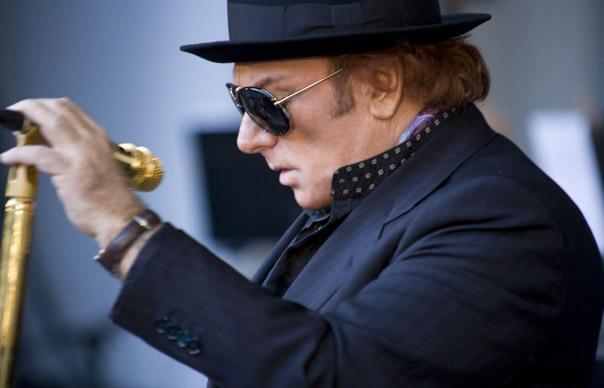BACK ON TOP
POINT BLANK/VIRGIN, 1999
A rich distillation of Morrison’s later work, featuring crisp R’n’B, warm soul, autumnal contemplation and even a Top 40 single in the ska-inflected “Precious Time”. Recorded with an unstarry cast of rock’n’roll session men at Morrison’s Wool Hall studio, near Bath.
WALTER SAMUEL (ENGINEER): Some of Van’s later albums are patchy, but Back On Top he really did enjoy. The songs are good. In fact, “Philosopher’s Stone” is one of the best things he’s done. He was a bit more prepared. Rather than turning up on the day and it being, “Right, here we go” – which is how he normally worked – we did some demos with guitar and voice. Fiachra Trench played piano and was musical director, and he heard the demos. That’s why it turned out so well. There was a bit more knowledge of when the chords changes were going to come, which doesn’t hurt! Even so, it was 1999 but it could just as well have been 1973. Everything was first and second takes with everyone playing at the same time. From an engineering point of view, it was tricky, trying to get the balance with so many people playing live all over the studio. It could be quite chaotic. He never explains what he wants, it’s up to the musicians to know.
IAN JENNINGS (BASS): I went to Wool Hall the day before the session and the other musicians were arriving. We were all on edge as nobody knew what we were going to record. Fiachra Trench was the MD, but he was sworn to secrecy. Nobody was allowed to see any of the notes about the songs, all he could say was that it would all be done live. The next day, we started around noon and cut most of the album in one day. A couple of tracks were done at an extra session, but it felt like we did the whole LP back to back. Fiachra would come around with a chord chart – “There you go, there’s the next one” – and bang, bang, bang! Two takes of each song, then on to the next. The first thing we did was “Precious Time”. Afterwards, we all trooped up the three flights of stairs to the control room to hear it back. That could be a long walk! Van was sitting on his own, and we all gathered around the mixing desk. When the track finished, nobody said anything. It was deathly quiet, then Mick Green said, really loudly in his Essex accent, “That sounds facking great!” Van just started laughing and we felt like we were on a roll. After we’d finished for the day, everyone just sagged, because the concentration levels were so intense.
SAMUEL: Van was there when we cut the tracks, but he didn’t really come in again. He’d moved office to Wool Hall and he was around a lot, but he wasn’t one to come in the control room for days on end. You did the mixes and gave him a cassette, and he might say “more vocal” or “a bit more bass”, that was all. He likes to hear the end product, but he’s not that interested in the technicalities. I worked with him for eight years and I’m still not sure how he does it. It just comes out of him. It just happens.
The History Of Rock – a brand new monthly magazine from the makers of Uncut – a brand new monthly magazine from the makers of Uncut – is now on sale in the UK. Click here for more details.
Uncut: the spiritual home of great rock music.



